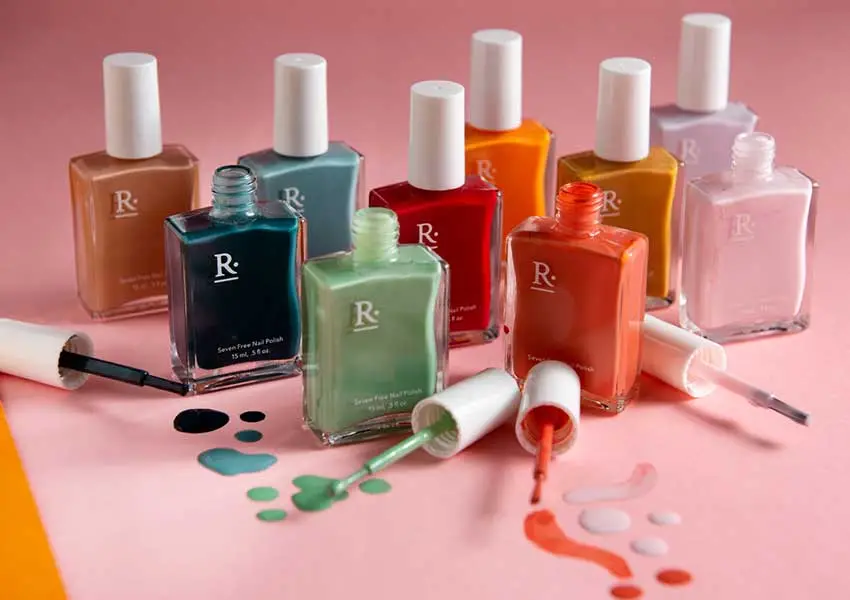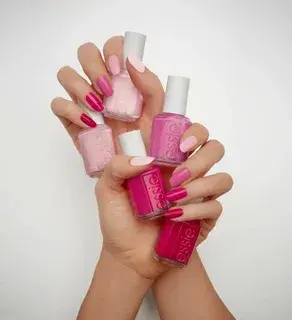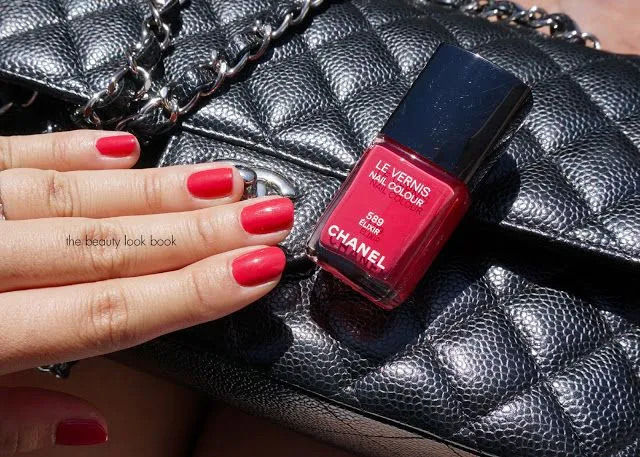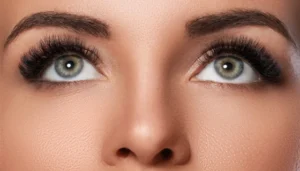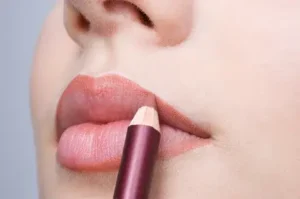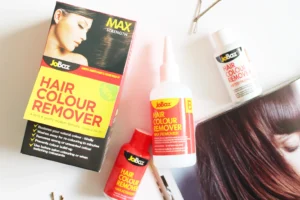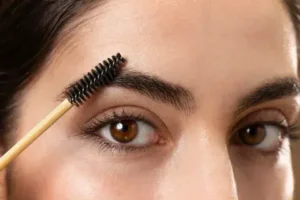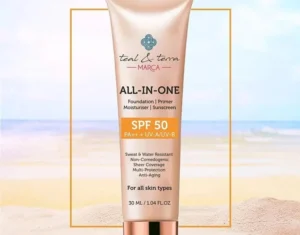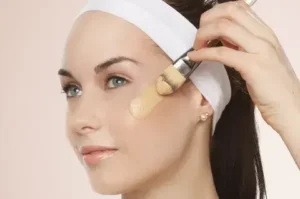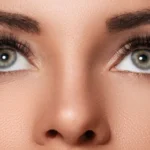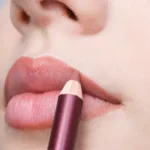Nail polish is a beauty staple, but debate persists around whether it constitutes makeup.
Let’s explore nail polish’s history, composition, application techniques, similarities and differences compared to other beauty products.
By considering various perspectives, we can gain a nuanced understanding of its classification.
Tracing Nail Polish Intriguing Origins
The earliest nail enamel traces to ancient China, where noblewomen used made of natural lacquers tinted with pigments.
They applied it with fine brushes in elaborate patterns. Centuries later, the formula changed little as it spread via Silk Road trade routes.
During the Medieval period in Europe, only upper class women commonly used richly colored nail stains made from cochineal, kermes and madder root extracts mixed with gum Arabic or egg whites.
By the late 1800s, the American nail polish industry began taking shape. Scientists experimented with synthetic dyes and resins.
Supply was unreliable until the 20th century when nitrocellulose was incorporated as the new standard binding agent.
It dried quickly while offering durability. In 1916, Cutex became the first mass produced American nail polish brand.
Their charming bottle designs revolutionized consumer packaging. Advertisements targeting fashionable flapper girls helped sales soar.
The 1930s proved transformative as darker red shades captured trendsetter favor.
This development coincided with the Food, Drug, and Cosmetic Act that required nail polishes display ingredient lists, boosting public confidence.
During WWII, vibrant shades became patriotic morale boosters. The postwar 1940s saw nail polish brands Revlon, Avon, and Max Factor embracing national marketing campaigns centered on beauty and glamor.
Their innovations like long wear formulas and pale pink tones enticed modern women further.
Delving into Nail Polish Composition
Like fine art or culinary creations, complex chemistry underlies nail polish’s alluring hues and satin textures. Key players in any quality formula include:
- Pigments: Dyes such as formulated color pigments dispersed throughout lend polish its identifying shades. A vast assortment includes shimmery, matte, and glitter pigment options.
- Polymers: Synthetic polymers form the clear liquid base that hardens upon contact with air into a protective seal. Standard polymers include nitrocellulose for its durability and polyvinyl butyral for its flexibility.
- Solvents: Volatile organic compounds such as ethyl acetate and butyl acetate thin the formula for smooth spreading. Their rapid evaporation triggers the hardening reaction.
- Plasticizers & Oils: Dibutyl phthalate and castor oil contribute emollience and prevent cracking or flaking of the dried film.
Supplemental ingredients may provide special benefits like nail strengthening, antibacterial effects, or quick drying times.
Complex mixtures undergo rigorous testing to avoid hazards while achieving outstanding product attributes
. The science behind a perfect manicure continues advancing thanks to devoted researchers and formulators.
Mastering the Art of Nail Polish Application
With practice, anyone can achieve salon quality results at home. Proper preparation streamlines the process:
- Buff and clean nails free of oils or residue using an emery board and acetone based nail polish remover.
- For best adhesion, wipe nails with rubbing alcohol and let dry completely before starting.
- Holding the polish bottle vertically, glide the brush across the neck to remove excess polish from the brush bristles.
- Paint the nail in smooth, even strokes from cuticle to tip using thin coats. Two to three coats usually provide full coverage and brilliance.
- After the first coat dries (2-3 minutes), apply the second immediately to avoid smudging. Repeat as needed, allowing thorough drying in between.
- Finish with a glossy topcoat to safeguard the manicure and give a professional high shine appearance lasting 5-7 days.
- For nail art like nail stencils or decals, apply before topcoat while polish remains slightly tacky for best adhesion.
With proper care, nail polish can stay chip free much longer compared to decades past. But touch ups may still be needed every few days as natural wear occurs.
Comparing Nail Polish to Traditional Makeup Products
Several noteworthy parallels connect nail polish to other popular beauty items:
- Both aim to enhance appearance aesthetically rather than for medical need, displaying trends via creative colors and designs.
- They let individuals express evolving styles and moods through coordinated looks matched to seasonal fashion and activities.
Some key distinctions set nail polish apart:
- Where makeup transforms facial features, nail polish singularly beautifies the nails.
- Its thicker, non transferable formula protects fragile nails rather than wearing away easily like most makeup meant for delicate skin.
- The multistep application and longer wear time of 1 2 weeks necessitates more commitment compared to quick and portable makeup.
Additionally, variables like ingredient safety profiles, appropriate usage contexts, and regulations differ some between nail and other beauty categories.
So while nail polish shares cosmetic qualities, its targeted area and durable nature occupy a quasi hybrid position.
Interpreting Nail Polish Classification Depends on Lens
Perception of whether nail polish constitutes makeup varies considering:
Medical Perspective: Dermatologists classify it as a nail treatment over makeup since it doesn’t alter facial features or skin. Safety risks also differ from topical skin products.
Regulatory Stance: OSHA excludes nail polish from cosmetic regulations and lists it separately due to its protective qualities. The FDA still monitors polish ingredients and production standards.
Consumer View: Casual users generally see it as makeup since the application coordinates full looks. But professionals focus more on its functional protective aspect as part of manicure services.
Context: Workplace policies could deem it non cosmetic while fashion or beauty editors embrace its status as a style accessory. Regulators observe its technical properties differently than average users.
Overall, the interpretation depends on whether emphasis is placed on nail polish’s decorative, cosmetic purposes or its effective treatment and adornment of the nail plate. Both perspectives hold merit depending on the situation.
A Timeless Beauty Staple
For hundreds of years, people have cherished this artisanal craft. Whether strictly makeup or not to some, nail polish undeniably enhances beauty through vibrant colors and creative designs.
Especially as technology advances, its popularity only continues growing worldwide.
Although skepticism accompanied early versions, innovation now assures safety alongside performance.
Modern nail polish empowers self expression while nourishing naturally beautiful nails. Its ability to complement countless looks cements its role as a beloved beauty staple.
So while classification merits debate, one thing is clear: this alluring accessory adds flair to lives and will delight for generations to come.
Frequently Asked Question (FAQs)
Q: Is nail polish considered cosmetics?
A: Other cosmetics may include nail polish.
Q: Can you use makeup as nail polish?
A: You can literally use any shadow.
Q: Are fake nails considered makeup?
A: Both are classified as cosmetic products.
Q: What techniques ensure the best nail polish application results?
A: Proper prep, thin coats, fast drying times between, and a glossy topcoat are keys to achieving salon quality manicures at home.
Q: How is nail polish formulated and what are its main ingredients?
A: Pigments provide color, polymers form the protective base, and solvents ensure proper application of advanced chemistry yields long lasting, vibrant polishes.
Conclusion of nail polish:
In conclusion, while nail polish shares some qualities with traditional makeup products, its classification is complex with reasonable perspectives on both sides.
As a beautifying treatment primarily for the nails, its staying power, protective benefits, and differences in formulation distinguish it somewhat from general face body cosmetics.
It undoubtedly enhances beauty and is an integral part of creative self expression for many. Whether deemed makeup, nail art, or elsewhere, nail varnish has delighted people for centuries and will continue to do so through innovative colors, effects and stylish nail designs.
Its status as a cherished beauty staple appears cemented for the foreseeable future.
